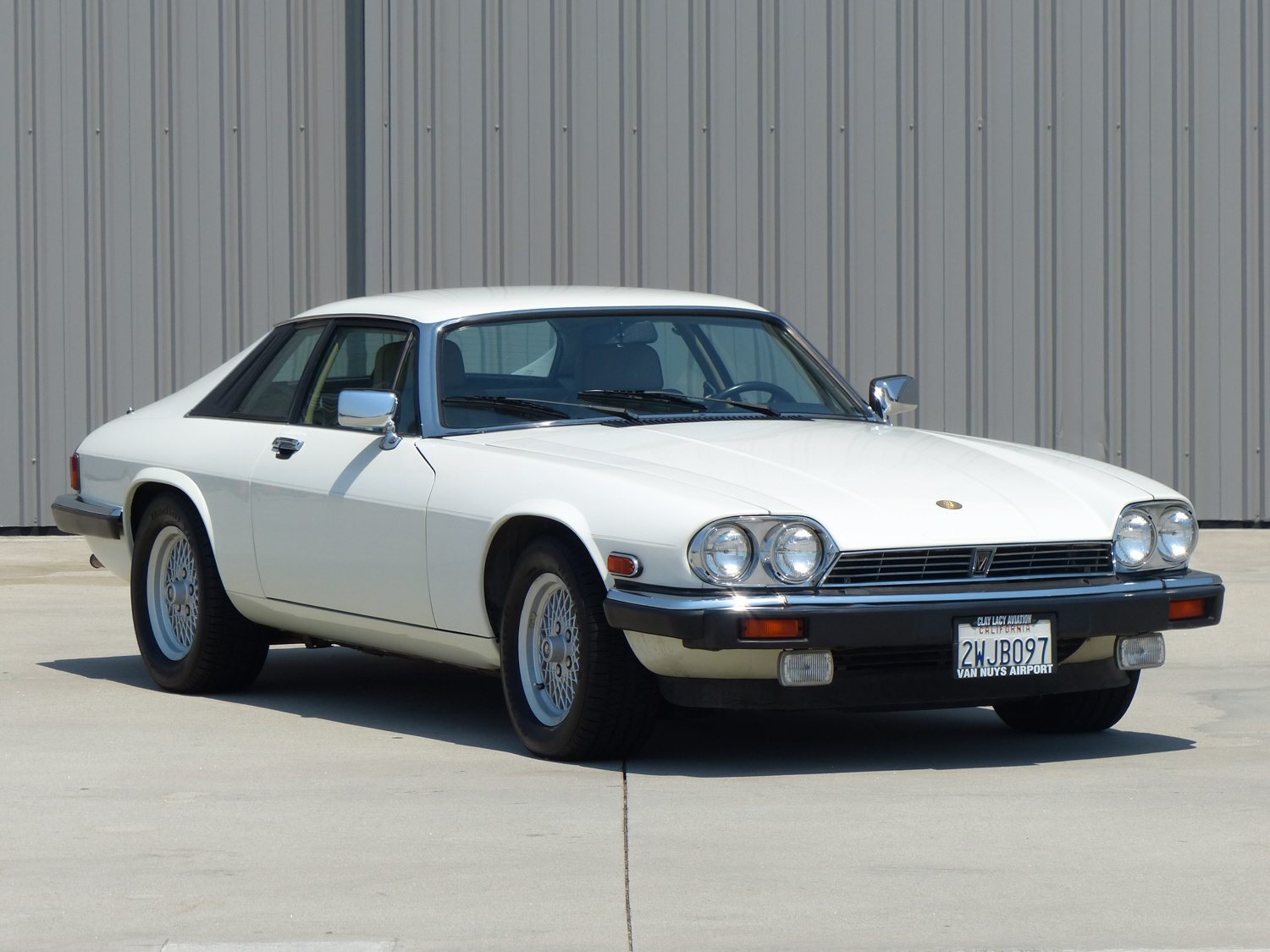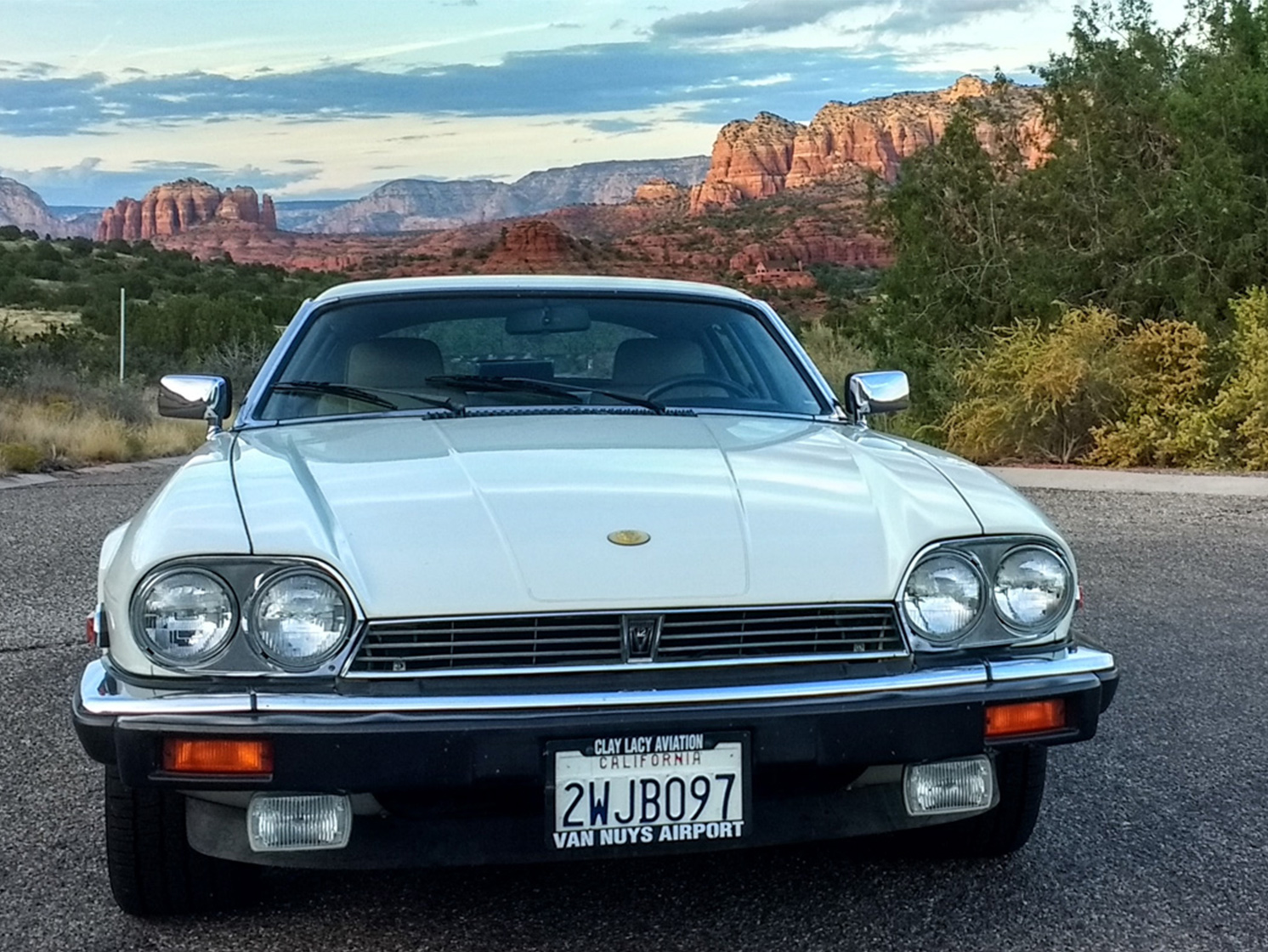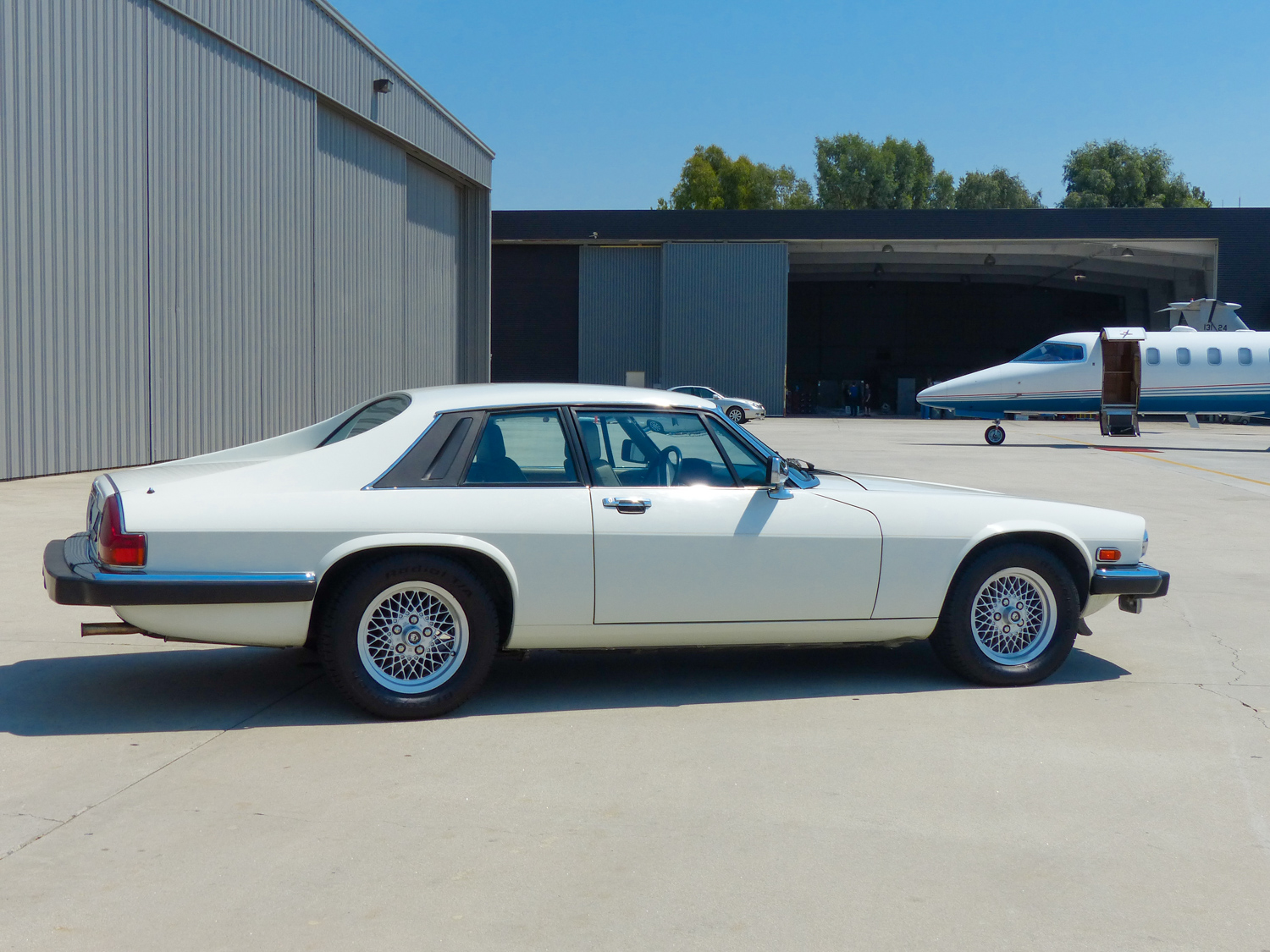Cruising in a 1990 Jaguar XJ-S is sublime
You have to climb down into a Jaguar XJ-S. This surprised me. Jaguar’s big coupe, a follow-up to the famed E-Type but not true successor, is a grand touring two-plus-two built on the same underpinnings as the XJ sedan. Its roof is nearly six inches lower than a contemporary competitor like the Mercedes-Benz 560 SEC. (It is even four inches lower than the current Ferrari GTC4Lusso.) You crouch down to pull up on the chrome door handle, and then you fold yourself through the pendulous door, and into the posh biscuit-colored interior.
Once you’re down there, the driving position is a bit like sitting in a tunnel, albeit one insulated with leather, wool, chrome, and burled elm. The footwell is narrow, slightly offset, and seemingly endless. The XJ-S is a tubular transporter, a sumptuous, flying-buttressed oddball, with consistent, refined thrust. Full disclosure: I was able to experience it all for a few days in Los Angeles via DriveShare by Hagerty.
The coupe’s deep well of power comes via Jaguar’s 5.3-liter V-12, a smooth jazz powerhouse first introduced in the Series 3 E-Type for 1971 and available until that car went out of production in 1975—the same year that the XJ-S was launched. In the early ‘80s, the engine was updated for more efficiency and received a power boost as well, putting out 263 hp and 278 lb-ft of torque. Its three-speed GM Turbo-Hydramatic 400 transmission sapped some of that potency, but still, the coupe could arrive at 60 mph in under 8 seconds, on par with the aforementioned Benz, and quicker than the automatic-equipped BMW 635 CSI, likely its two closest rivals.



But outright acceleration, while satisfying, is only a distraction to the Jag’s true strength—soaking up roadways. Not only does the gutsy V-12 make quick work of southern California’s superhighways, something I was able to discover on a trip from the airport to downtown. It is masterful at absorbing the weary dread of LA’s surface streets.
With 60 series BF Goodrich Radial T/A tires, riding on body-colored 15-inch basket weave-style factory “Lattice Alloys,” and coupled with Jaguar’s legendary long-travel suspension, the car exhibits a perfect balance of American plush float and German road-holding assuredness. Roadway imperfections that would terrify me in most contemporary luxury vehicles—speed bumps, potholes, rutted asphalt, even minor curb cuts—are delightfully vanquished under the XJ-S. The car turns Los Angeles traffic into an occasion, and one of enjoyment. A friend, an Angeleno, to whom I gave a ride home from a Bentley event, smiled in amazement as we piloted ourselves down Beverly, inured to the clotted traffic and rubbly tarmac, as if wrapped in a mill’s-worth of two-ply cashmere. “If I had this car,” he said, “I might actually leave the house on occasion.”
The Jag also excels at making an appearance, even in auto-obsessed LA. A colleague who I coincidentally drove by at the airport just after picking up the car, literally swooned and applauded as I loafed past. The valet at the Waldorf-Astoria in Beverly Hills made a point of leaving my crisp white 1990 steed parked right out front, choosing it over the Ferraris, Bentleys, and Benzes that are almost immorally commonplace in the neighborhood.

“I love vintage cars,” he said, disrupting momentarily my delusional sense that any car that existed during my adulthood could not possibly be considered classic. “They have so much more character.” I panicked that this compliment would immediately curse the Jag’s perfect reliability record, but it did not. A pristine, meticulously maintained, 30,000-mile example owned originally by an aircraft engineer, the car never failed to start or run perfectly. The power-mirrors operated. The cassette player spooled. Even the air conditioning impressed, blowing ice cold.
That isn’t to say that driving it was without its challenges. Luxury cars have become so good, so completely lacking in compromises in the past 28 years, that those of us who do not own a fleet of ridiculous vintage vehicles can readily forget that just a few decades ago, owning almost any car meant conditioning oneself to trade-offs or limitations in reliability, comfort, safety, features, fuel economy, utility, functionality, or (most important) style. The Jag exudes charm, slathers the world in its suave flying-buttressed loucherie, and allows any driver the unique opportunity to sport an ascot.



But its “High Efficiency” V-12 pulls single-digit mpg in city driving, its switchgear—like the climate control knob or cruise control toggle—is as likely to pop out of place as a button on a pair of tight jeans from my high school days. And did we mention the hood? Piloting this proboscoid beauty, I had to constantly remind myself of the Classical proportions of its prow. Though the XJ-S is just a few inches longer than one of today’s “small” coupes, like the current Mercedes-Benz C-Class, it feels as though 90 percent of that length is fore of the steering wheel. Parking lot maneuvers, especially pulling out into traffic, can be a major challenge.
Jaguar made the XJ-S for 20 years and sold more than 115,000 of them around the world, so examples abound. An average one will run you just into the high four-figures, a great (Condition #2) one will cost less than $15,000, and even the best one in the world (Condition #1) is still less than $25,000.
The car is notorious for engine troubles, especially issues related to the heat produced by the silken motor. But if you want to get into a V-12—and, Duchess, you do—there is practically no lower point of access, and few that will command such elegance and presence. I’ve longed for an XJ-S for decades. DriveShare gave me the opportunity to test drive one. Now, I’m trolling for a pre-refresh, pre-Ford ownership example. Preferably in gold. To match my favorite ascot.







